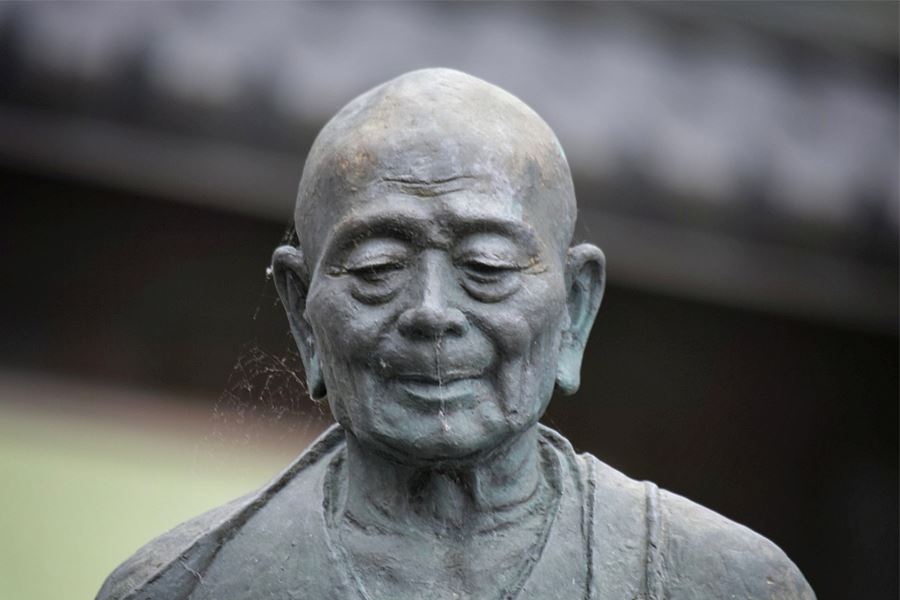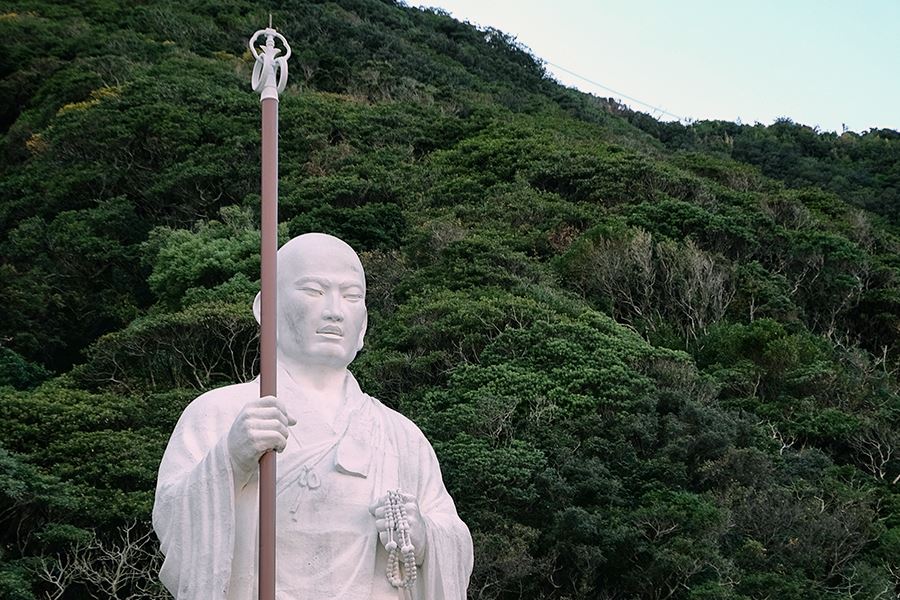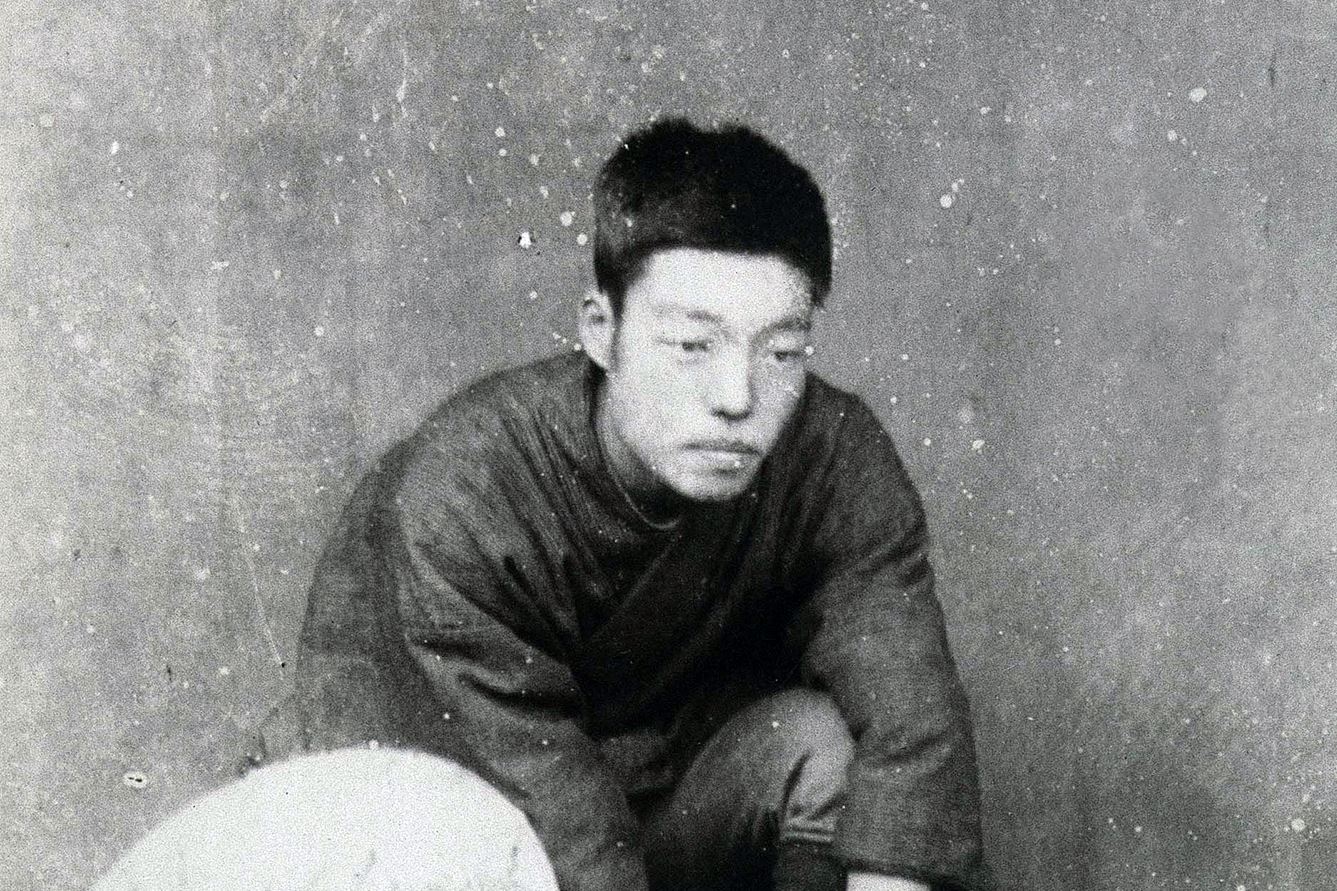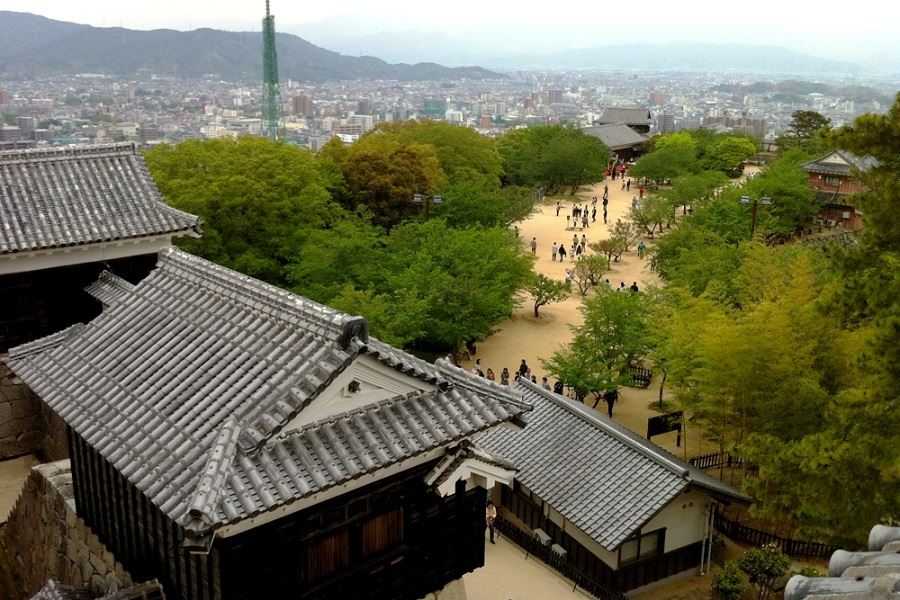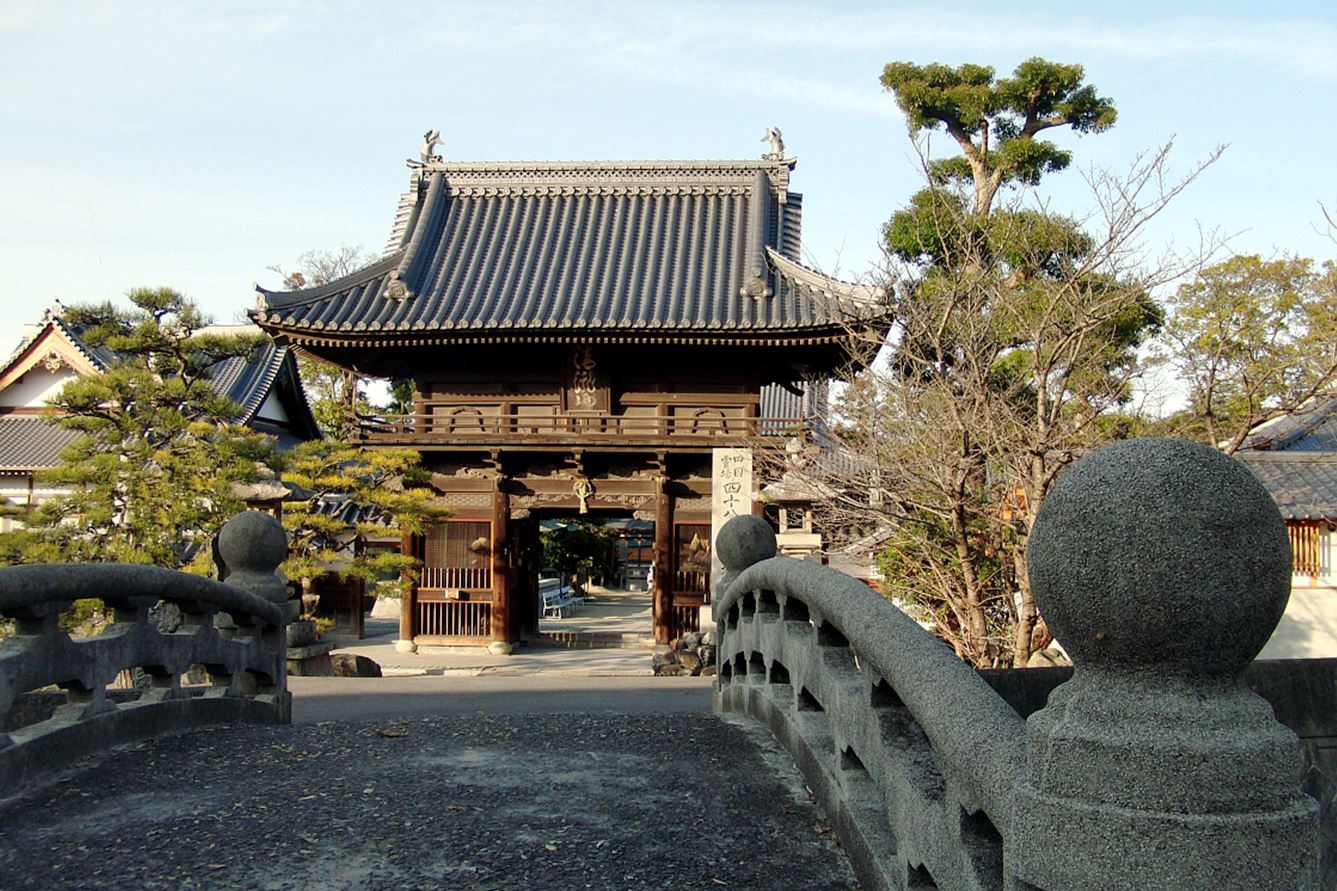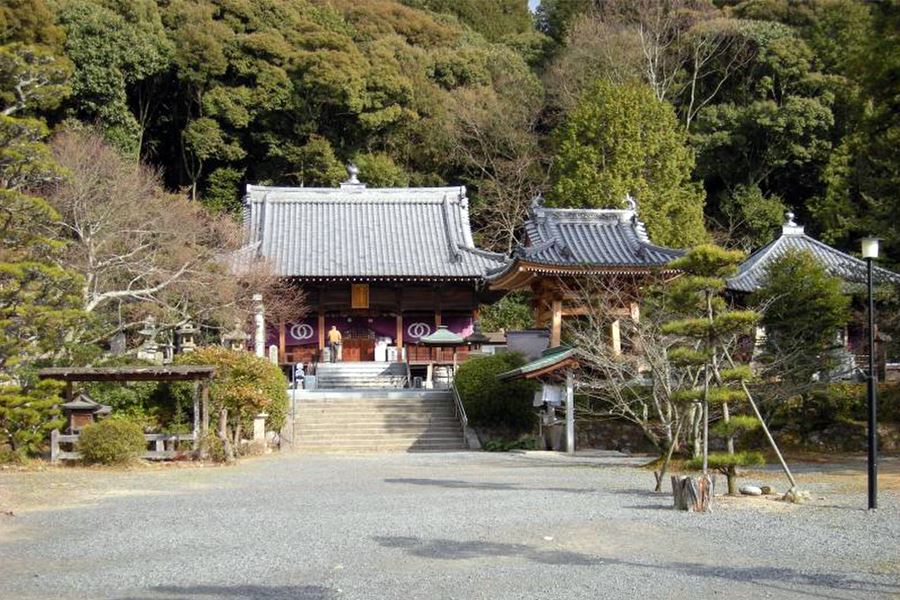Temple 49, Jōdo-ji
Home » Temple 49, Jōdo-ji
Temple 49, Jōdo-ji
Jōdo-ji, The Temple of the Pure Land, is No. 49 on the Shikoku Pilgrimage, or Henro. It’s located on a hill that faces to the south offering a view of Mt. Ishizuchi. The main building is built in the Chinese style of architecture, with a rustic and weathered air.
The graveyard in the bamboo grove behind the temple has some interesting statuary, and the observation platform on top of the hill offers a panoramic view of the southern part of Matsuyama to the Seto Inland Sea, and there’s a fine view of Mt. Ishizuchi.
The temple, originally of the Hoso sect, was founded by Gyoki who carved a Buddha statue. At that time, it was a place for worship for Emperor Koken. Later, Kukai restored the temple and converted it to the Shingon sect. Thereafter, it prospered and controlled some 66 subsidiary temples.
Jōdo-ji is associated with an intinerant monk, Kuya Shōnin who lived from 903 to 972 in the Heian period. He practised austerities in Awa and Tosa provinces in Shikoku and stayed at Jōdo-ji from 957 to 961 performing good works. There’s a statue of him in the Main Hall. Thin and with a bent back, he holds a staff topped with a deer antler in one hand and in the other, a hammer for the gong hanging on his chest. Attached by a wire from his open mouth are six little Buddha figures, representing his constant chanting of the phrase “Namu Amida Buddha”. Kuya spent his life repairing roads, building bridges, digging wells, and cremating the dead abandoned by roadsides in the turbulent times.
A haiku by Matsuyama poet Masaoka Shiki is posted at the entrance to the temple.
Kuya of Shimotuski
can survive on bones
This poem suggests that even though Kuya is long gone, his teachings remain.
In 1192 in the Kamakura period, Yoritomo Minamoto prayed for the prosperity of his clan and restored the temple. However, it burned down in 1416, and the Main Hall and the inner sanctum were rebuilt by the local lord, Kono Michinobu around 1469. The buildings combine Japanese and Tang Chinese features. They were repaired extensively in 1965 and are designated an important national cultural property.
The symbol of two rings interlinked on the curtain is the crest of the Wakisaka clan, who were awarded land in this area for their services at the Battle of Sekigahara in 1600.
Information
Name in Japanese: 浄土寺
Pronunciation: jōdoji
Address: 1198 Takanokomachi, Matsuyama-shi, Ehime-ken 790-0925
Related Tours

Experience the most beautiful and interesting temples of the Shikoku Pilgrimage in seven days.

A tour for families or friends, staying in the most characterful kominka and ryokan of Shikoku.

Visit the most beautiful and interesting temples of the Shikoku Pilgrimage and walk the toughest trails.


